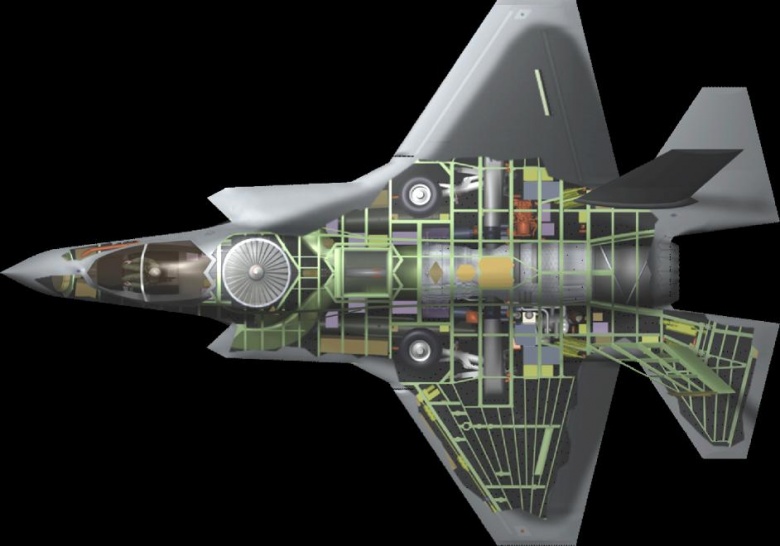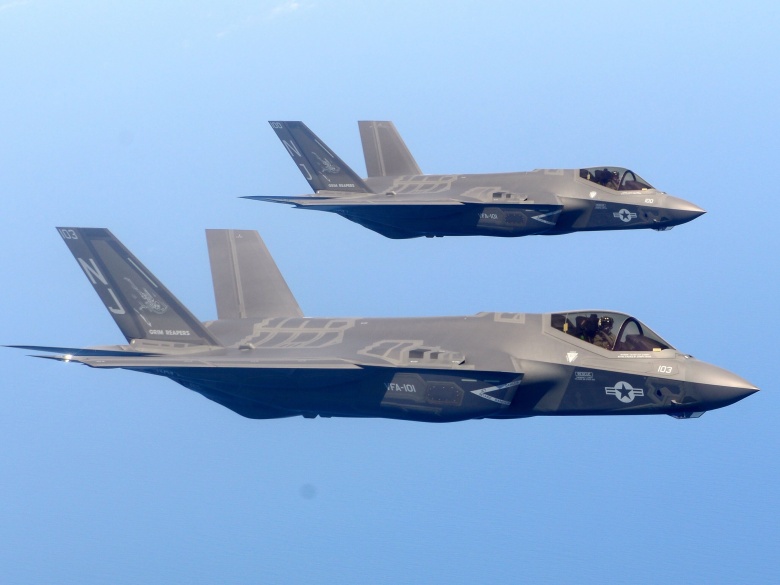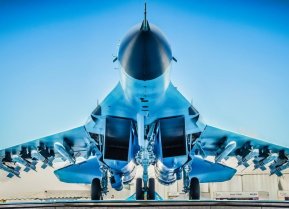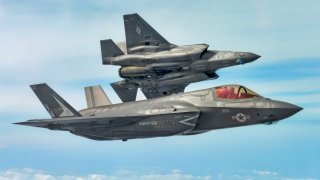More F-35 Fighters Will Soon be in the Air: But Is It Still Too Few?
The Lockheed Martin F-35 Lightning II remains the most capable multirole fighter in operation in the world today. But are there still too few of them?
The Lockheed Martin F-35 Lightning II remains the most capable multirole fighter in operation in the world today, and as of this month, more are now in service. In the United Kingdom on Friday, a second frontline squadron was stood up to fly the RAF's F-35 Lightning stealth fighter jets.
The first of the United States-built warplanes touched down at RAF Marham in Norfolk in 2018 – with 617 Squadron, famously known as the Dambusters, becoming the first to be equipped with the advanced fifth-generation aircraft.
A second squadron, 809 Naval Air Squadron (NAS), was stood up to fly the F-35 Lightning II Dating back to the Second World War, 809 Naval Air Squadron was selected by the First Sea Lord, Admiral Sir George Zambellas, to receive the Lightning II because of its illustrious history as a strike and attack squadron.
"Lightning is forecast this Friday... A phoenix is rising from the flames... Are you ready for the Immortals?," the Royal Navy (@RoyalNavy) announced via a post on X, the social media platform formerly known as Twitter.
A Historic Unit
809 Naval Air Squadron first saw action in 1941 in the Arctic, operating the Fairey Fulmar, while the unit later took part in combat operations in Malta, North Africa, Salerno, the south of France, the Aegean, Burma, Suez, and the Falklands.
It was decommissioned in December 1982, with its eight Sea Harriers following the Falklands War – with none being lost.
A parade and flypast marked the resurrection of 809 NAS at RAF Marham on Friday, the BBC reported.
Air Marshal Harvey Smyth, RAF Air and Space Commander, said the current plan is to be able to "readily deploy two front-line squadrons of Lightnings at sea, up to 24 aircraft" by late 2025.
"This is about adding more capability to our combat air force," AM Smyth said. "The Royal Air Force's primary role is to achieve control of the air in any time of conflict. We're seeing this play out quite clearly in Ukraine at the moment, where neither side has been able to gain control of the air."
Smyth further praised the capabilities of the F-35, and suggested that the ongoing conflict highlighted the importance of control of the air, and how the fifth-generation fighter has the capabilities to accomplish such a mission.
"Its ability to work in a very highly contested environment, particularly where there's a lot of electronic warfare, and again, that's lessons we're seeing come out of Ukraine," Smyth explained.
Too Few Joint Strike Fighters?
Even with a second front-line squadron, concerns have been raised that the UK may not have enough combat aircraft should the island nation find itself in a conflict with a peer adversary.
A parliamentary report published by the House of Commons Defence Committee in September noted that the UK has fewer than 160 combat jets – down from the 2,900 pilots and aircrews that Winston Churchill famously described as "The Few" who took part in the Battle of Britain in 1940, noted David Hambling for Forbes.com.
The UK had scaled back its acquisition of the F-35B – the short/vertical takeoff and landing (S/VTOL) variant of the Joint Strike Fighter – from 150 aircraft to just 138. Total procurement has included 48 aircraft while 27 more were ordered for a total of 74.
As the "Aviation Procurement: Winging it?" report noted, it currently remains unclear if additional aircraft will be ordered. Moreover, the F-35B fleet has grown slower than initially planned.
It is also unclear how the UK's F-35 will be employed.

As Hambling reported, each of the UK's two new Queen Elizabeth-class aircraft carriers can operate with up to 36 F-35Bs, so in theory, the entire fleet of the Lightning IIs could be dedicated to this mission.
"But sending them away as part of a carrier strike force with the Royal Navy would deprive the Royal Air Force of aircraft to carry out its own missions," Hambling wrote.
"Are the F-35s that we have in the UK carrier-borne air systems that are able to operate on land, or are they land-based systems that are able to operate at sea?" a retired naval captain asked the UK's Committee. "Fundamentally, we make the choice to not decide. That drives double accounting over what you are using those systems for."

Redirected Towards Tempest
As previously reported more than three years ago, there had already been calls within the UK to redirect the money away from the F-35 program and towards the UK-led Tempest – which is now part of the Global Combat Air Programme (GCAP). That sixth-generation fighter aircraft is expected to enter service in the mid-2030s and could be "optionally manned" while supported by a swarm of unmanned drones.

The issue of course is whether any potential adversary will "wait" until those aircraft arrive, knowing that the UK has far fewer aircraft than the famous "Few" had when they defended the skies over the UK 83 years ago.
Author Experience and Expertise
Peter Suciu is a Michigan-based writer. He has contributed to more than four dozen magazines, newspapers, and websites with over 3,200 published pieces over a twenty-year career in journalism. He regularly writes about military hardware, firearms history, cybersecurity, politics, and international affairs. Peter is also a Contributing Writer for Forbes and Clearance Jobs. You can follow him on Twitter: @PeterSuciu.


